- RF Lens Benefits And Why You Should Make The Switch
-

Canon offers one of the largest range of quality lenses in the market to suit all types of photography and videography. EF lenses have a long-standing history of high-performance, however in recent years there has been massive growth in Canon's new generation RF lens range. With so many choices now available, how do you know which lens system is best for your needs? If you already have reliable favourites amongst the EF range, why should you consider upgrading to the RF range for your full frame mirrorless? Here we run through the main advantages of RF lenses and some factors to consider.
EF lenses feature the EF mount which is designed for Canon’s DSLR range of cameras. This is often recognised by a red dot on the camera body and lens.
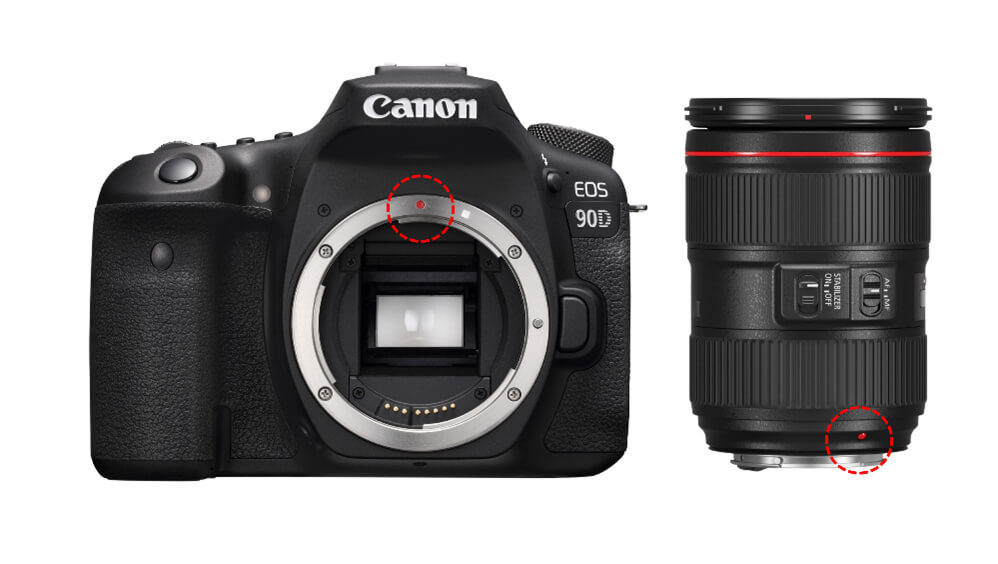
RF lenses feature the RF mount which is designed for Canon EOS R series mirrorless bodies. These lenses work on the full-frame EOS R series bodies like the EOS RP, EOS R, EOS R6, EOS R5, EOS R5 C, and EOS R3. They are also compatible with APS-C EOS R series bodies like the EOS R7 and EOS R10. This is often recognised by a red line on the camera body and lens.
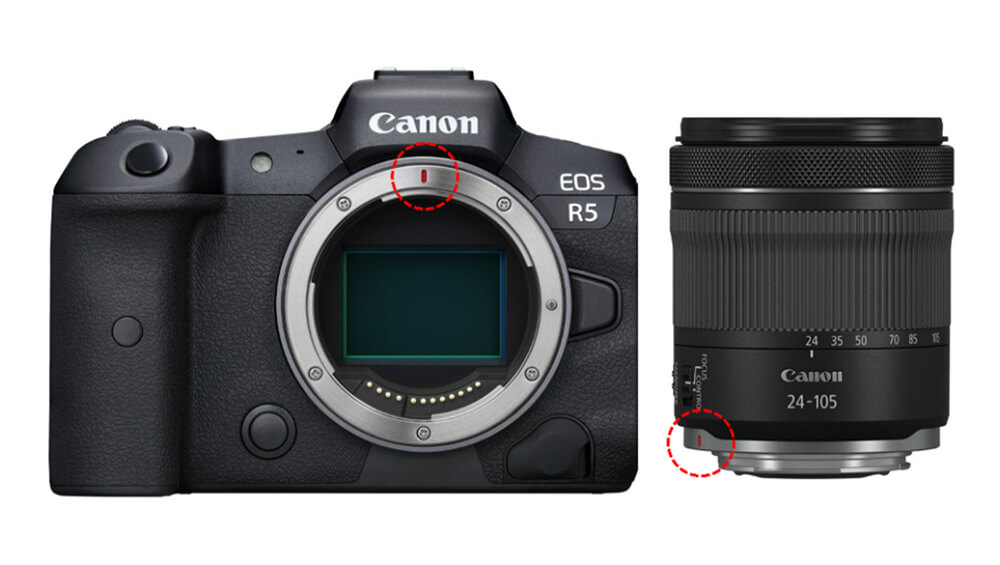
At the heart of Canon's EOS R full frame mirrorless system is the RF lens mount. RF lenses use the same optimised 54mm inner diameter as the EF lens range but the flange distance (the distance between the lens mount and the camera sensor) has been reduced by more than half to just 20mm.
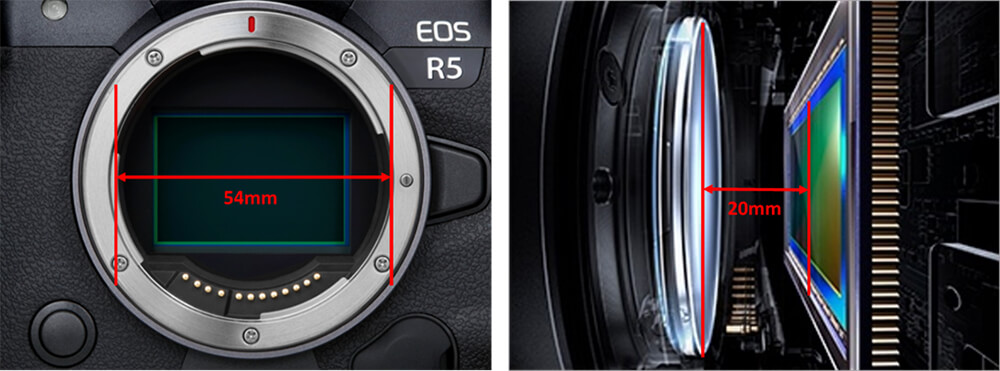
With large elements now being placed closer to the sensor as possible, there is less bending of light rays as they pass through the lens, which in turn minimises vignetting. This provides better image quality and sharpness, especially near the edges of the frame.
Another advantage of adopting the RF lens system is that you can achieve larger maximum apertures for a given focal length. For example, the RF 28-70mm f/2L USM has constant f/2 maximum aperture throughout the entire standard zoom range compared to the EF equivalent EF 24-70mm f/2.8L II USM. This offers more creative control over background blur and allows you to push the boundaries of low-light shooting.
Photographed with the RF 28-70mm f/2L USM
RF mount lenses feature 12-pin connection, compared to EF mount lenses which have 8-pins. This helps to increase the speed and volume of data transmission between the camera body and lens, resulting in benefits such as extremely fast autofocus, enhanced image stabilisation and real-time Digital Lens Optimisation (DLO).
DLO uses the lens's built-in memory capacity to allow it to store data on any aberrations that occur, meaning it can quickly and automatically correct these while you shoot. The image is then adjusted to provide uniform quality and consistent sharpness, restoring the original texture and depth of field.
Photographed with the EOS R6 & RF 85mm f/2 Macro IS STM
Any slight movement during shooting can cause camera shake resulting in blurry photos and videos. This often occurs when shooting handheld, in low-light conditions or at low shutter speeds. With the high-speed communication and coordinated control between EOS R series camera and lenses, more precise image stabilisation is achieved.
In addition to the conventional lens gyro sensor, Dual Sending IS allows the camera shake to also be detected from the camera's CMOS sensor image information. With lens-based image stabilisation, gyro sensors detect the camera movement, and the microprocessor in the lens moves the image stabilisation lens elements the precise amount and direction required to counteract the amount and direction of the camera shake. The result is that the image remains stationary on the camera sensor.
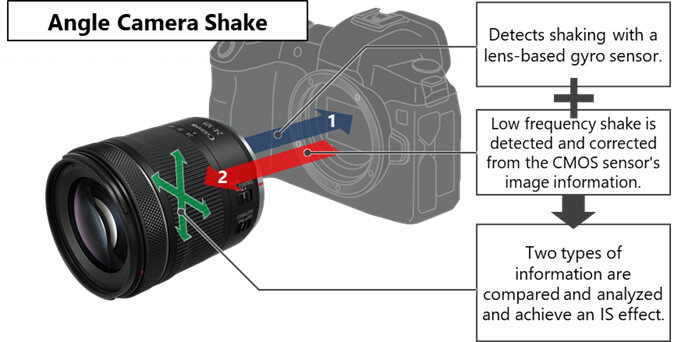
Hybrid or Combination Image Stabilization is when the lens-based image stabilisation works together with the In-Body Image Stabilization (IBIS) of selected EOS R series cameras (EOS R7, EOS R5, EOS R6 and EOS R3) to correct not only angle camera shake when you rotate and change the camera angle, but also shift camera shake, which occurs during parallel camera movements such as panning. This is a real benefit when shooting handheld videos. The EOS R5 and EOS R6 are the first Canon cameras to offer built-in 5-stop IS which works hand-in-hand with the lens-based IS system, to deliver up to an incredible 8 stops of benefit. This is particularly effective against low-frequency vibration, such as that caused by your breathing and heartbeat, and at wider focal lengths.
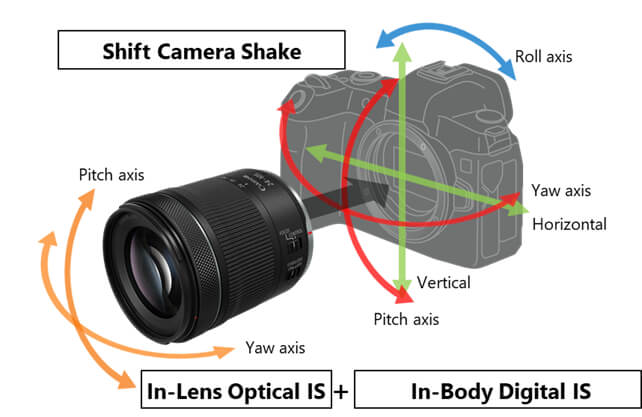
Canon’s Stepper Motor featured in many of the entry to intermediate level RF lenses and recognised by ‘STM’ in the lens name e.g. RF 16mm f/2.8 STM, allows the lens to focus smoothly and quietly. The smooth autofocus creates natural and seamless looking footage so you get clean transitions when moving between subjects or when focusing from the foreground to background.
Whilst some motors used in lenses make very audible and distracting mechanical noises when they focus, the STM’s near-silent focusing, allows you to record more of what you naturally hear in an environment. This is particularly handy when recording audio with a camera-mounted microphone.
Canon’s USM (Ultra Sonic Motor) has a reputation for its extremely fast autofocus. The new generation Nano USM featured in some of the RF lenses like the RF 24-105 f/4L IS USM, RF 15-35mm f/2.8L IS USM and RF 24-70mm f/2.8L IS USM, combines the speed and precision of USM motors when locking focus onto a subject, with the silent action of the STM motors.
RF lenses strike a great balance between high performance and compact lightweight design. For example the Canon RF 70-200mm f/2.8L IS USM lens has been designed to achieve the much loved 70-200mm zoom range in just 146mm (at its shortest length with its retractable design). This makes the lens approximately 27% shorter and 28% lighter than it's EF equivalent. Combined with the compact EOS R bodies, the RF lenses make a great choice for when you're on the move such as during travel, street and wildlife photography.
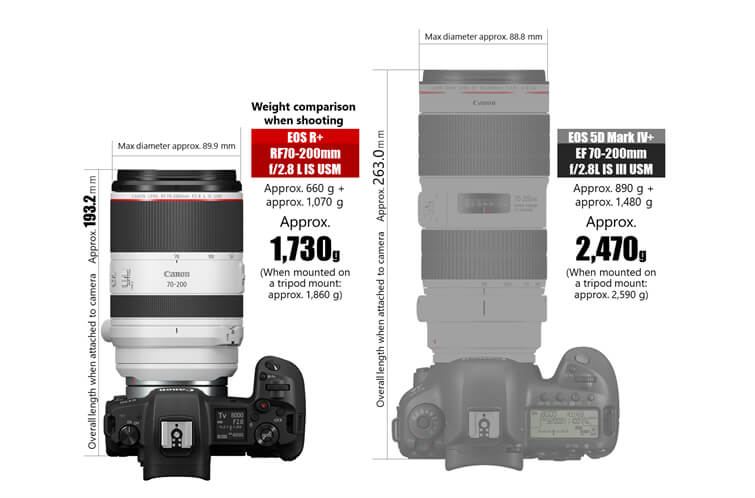
If you've previously invested in EF lenses and moved over to full frame mirrorless, the good news is that these can still be paired with the EOS R series bodies using the EF-EOS R Lens Mount Adaptor or EF-EOS R Control Ring Mount Adapter. The adapter offers additional creative control, with full compatibility and no loss in performance.
But keep in mind expanding your lens range to include the newer pioneering RF lenses allows you to take full advantage of the RF mount's capabilities. The RF lenses have been designed to offer higher quality and speed with a performance system optimised for EOS R cameras.
RF lenses also offer new innovations such as the RF 85mm f/1.2L USM DS which is the first lens which features Canon's original DS (Defocus Smoothing) coating. This enables you to achieve significant soft and smooth bokeh, expanding the possibilities of portrait shooting even further.
Photographed with the RF 85mm f/1.2L USM DS
Another creative innovation can found in the RF 100mm f/2.8L Macro IS USM which allows you to capture intricate details, as the World’s first1, medium telephoto marco lens with a maximum shooting magnification of 1.4x. The lens also has Canon’s first adjustable Spherical Aberration (SA) control ring on the lens barrel that allows you to adjust the depiction of the image’s background bokeh. Used to add a unique emphasis to your imagery, the SA Control Ring allows the user to change the shape and character of the foreground and background bokeh.
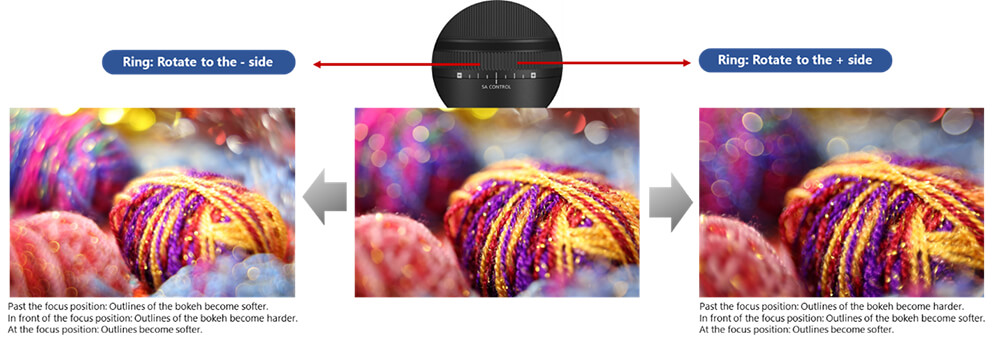
The RF lenses are equipped with a lens control ring that enables fast intuitive shooting - offering customisable control over shutter speed, ISO, or exposure compensation. This unique function allows you to accurately adjust these settings without having to take your eye from the viewfinder.
The good news is that you can also get this same new functionality when shooting with EF lenses on EOS R system cameras by using the EF-EOS R Control Ring Mount Adapter.
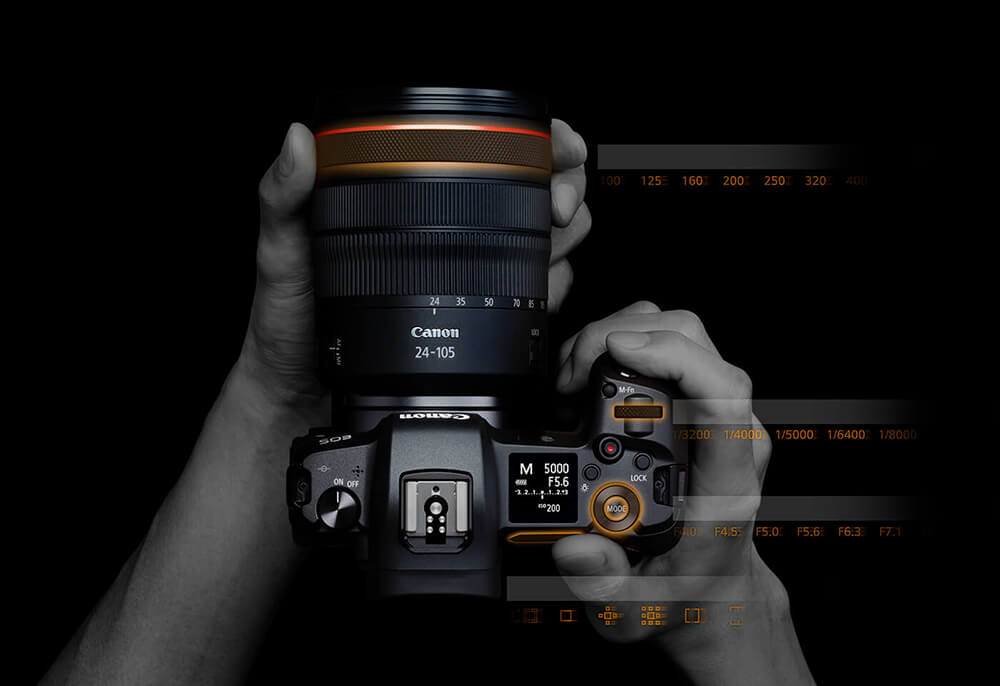
So, with the growing range of Canon lenses available and the continuous innovation, the creative possibilities in both photography and videography are endless!
Take full advantage of your EOS R Mirrorless camera and explore the options of RF lenses which have been designed to optimise performance.
1 As an autofocus interchangeable lens for full frame mirrorless camera. Canon survey as of April 13, 2021.

Matt Cherubino shares aerial photography tips using the EOS R5.

Canon Photographer Jenn Cooper explains everything from focal lengths and aperture values to the different types of available lenses and when to use each one.

Fashion photographer Emily Abay and her crew head to SUNSTUDIOS in Sydney to put the new Canon EOS R Mirrorless System through its paces.